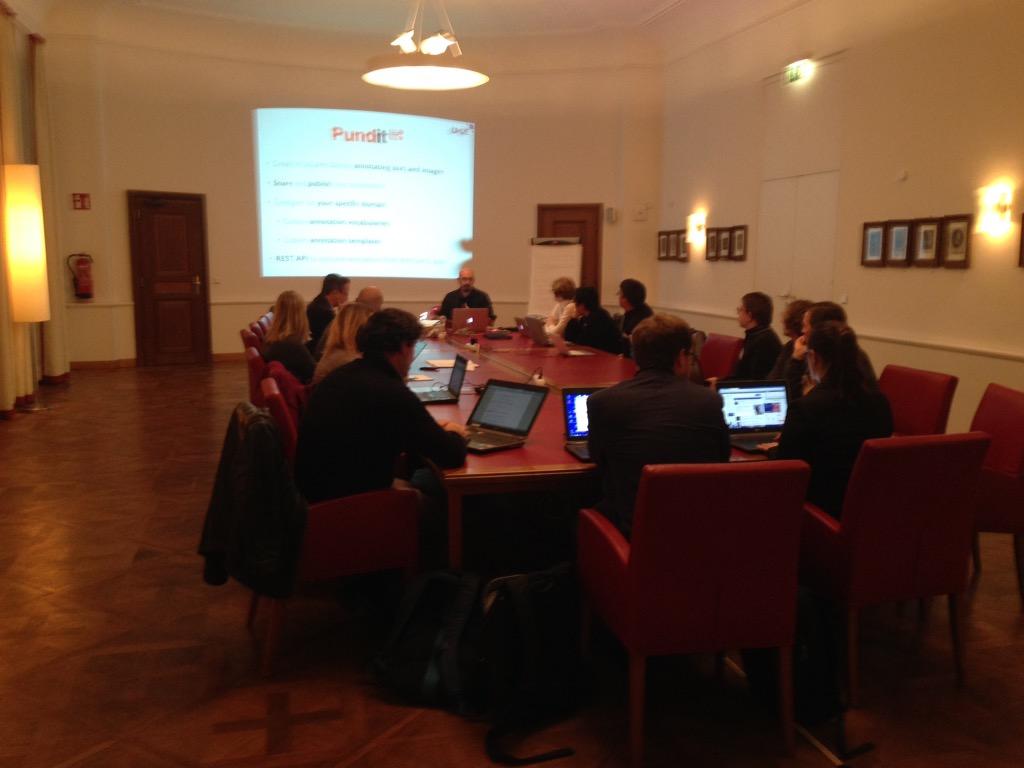
Last week the DM2E team at the Austrian National Library (ONB) organised a seminar on the wider possibilities of scholarly and library (re-)use of Linked Open Data in Vienna. Max Kaiser, Head of the Research & Development department of the ONB opened the afternoon and stressed how satisfied the library is with the progress that DM2E has made in the last years, both in aggregating manuscript content into Europeana as well as in publishing delivered metadata as Linked Open Data using the DM2E model, a specialised version of the Europeana Data Model (EDM) for the manuscript domain.
After this welcome, Doron Goldfarb (ONB) gave an introduction to the DM2E project and the four main areas of work: aggregation of manuscript metadata and content, interoperability infrastructure, digital humanities applications and community building.
Marko Knepper of the University Library of Frankfurt am Main then went on to explain, with examples from his library’s manuscripts, how library data is transformed into linked data through the use of tools developed in DM2E such as MINT and Pubby, showing the final result as it appears in the Europeana portal at the end.
After the first break, Bernhard Haslhofer (Open Knowledge Austria / AIT) and Lieke Ploeger (Open Knowledge) gave a joint presentation on the value of open data and the OpenGLAM network. Bernhard introduced the topic with a talk on his experiences with Maphub, an application he built which operates on open cultural heritage data and allows users to annotate digitized historical maps. Following on his example, Lieke introduced the OpenGLAM network, a global network of people working on opening up cultural data that was set up in the scope of the DM2E project, and talked about the recent and future activities of the OpenGLAM community.
Next up was Kristin Dill (ONB) with a presentation on the scholarly activities in DM2E. She talked about the Scholarly Domain Model (SDM), which informs the work on digital tools for humanities scholars by addressing gaps in digital workflows and recognising patterns in the behaviour of scholars. She showed the different layers of abstraction of the model, and demonstrated how certain scholarly activities can be identified in the Pundit tool.
The final talk of the day came from Susanne Müller of the EUROCORR project. After a brief introduction to the BurckhardtSource project, she detailed how the semantic annotation tools developed in DM2E have been applied to the European correspondence to Jakob Burckhardt, a Swiss cultural historian from the 19th century to enrich this data.
The last part of the day was reserved for a workshop based around the Pundit tool for semantic annotation from NET7. After an introduction to the tool, the group was divided into two for a hands-on session, which was received very well by participants.


Comments are closed.